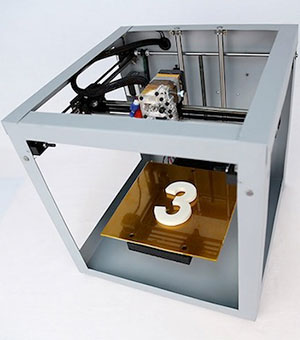Last week, Richard Baguley (the bagel-iest of the Richards) at Tom’s Guide wrote up a brief review of some of the latest home 3D printers on the market. I still haven’t gotten a chance to see all of the desktop printers now available across the world up close and personal, let alone those still in beta on crowd-funding sites (I do wonder if anyone has?) so I won’t be able to give my own opinion alongside Richard’s, but I can give you some of his breakdown as to which home 3D printer is right for what audience and you can feel free to throw your opinions into the comments section below. We can also compare it to Make Magazine’s epic 3D printer guide published at the beginning of this year. Also bear in mind this won’t feature the Ultimaker 2, which launched to great acclaim last Friday evening, as reported by Moheeb who was there in person.

He says that the Cube, from 3D Systems’ Cubify, is the best home printer for beginners because it works right out of the box, has simple to follow instructions, no heated bed, WiFi, and easy to change printer cartridges. Make had similar things to say about the Cube, in terms of its ease-of-use, but, after attending the Inside 3D Printing conference, I’d say that the Afinia H-Series, Make’s “Best Overall Experience”, is worthy competition. The nice fellas at the booth showed me how easy it is to operate and change out plastic spools. The interface is a step up from the Repetier software I use for my Bukobot and the resolution on their prints is simply amazing for a desktop printer. The price difference between the two, $1,299 for the Cube and $1,599 for an Afinia machine, may have been the factor that pushed Richard in favour of the Cube.

The review from Tom’s Guide isn’t as wide in scope as Make’s almost complete 3D printer guide, but a lot of time has passed since their release of that issue. And, since then, there are more RepRap derivatives, combination 3D scanner and printers, hybrid milling and 3D printing machines out there that both reviews are missing some good options. So, let us know in the comments section what Rich from Tom and what Make Mag are missing — and what should be featured in their next Review editions!
Source: Tom’s Guide



